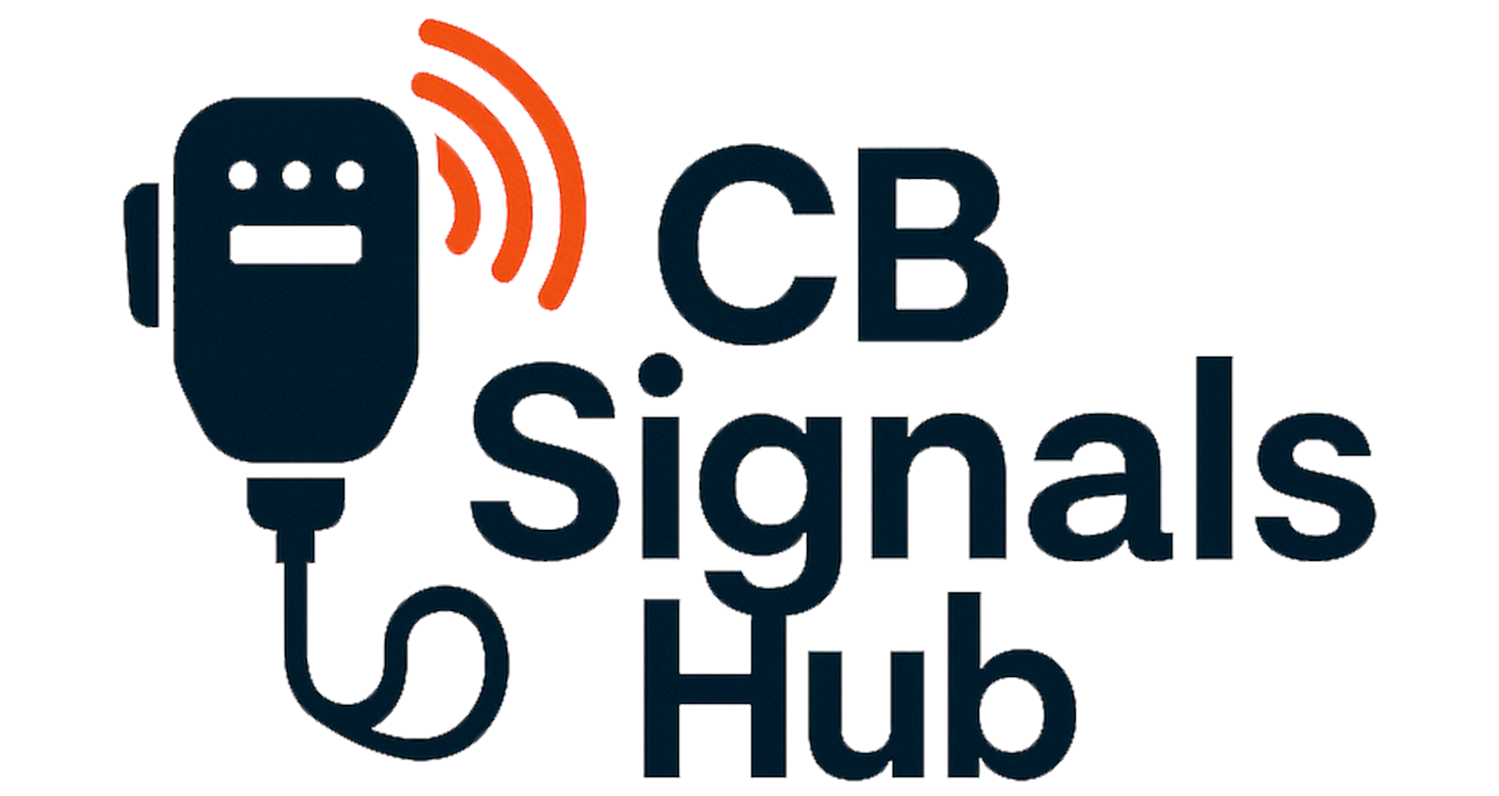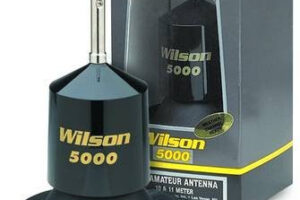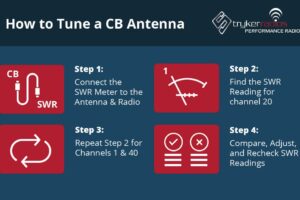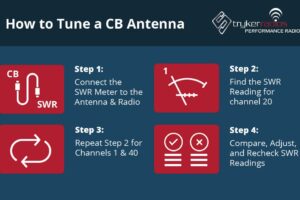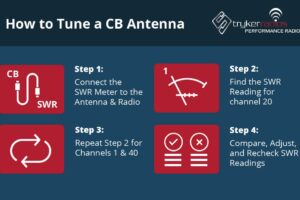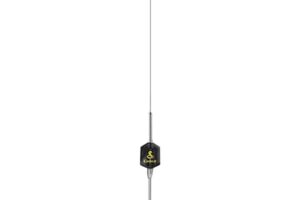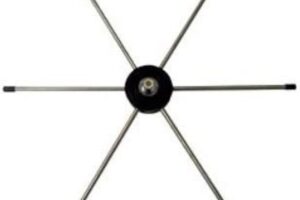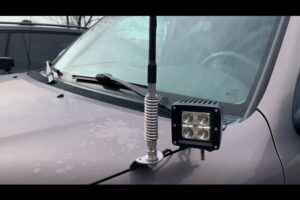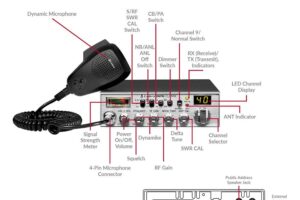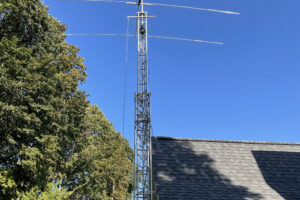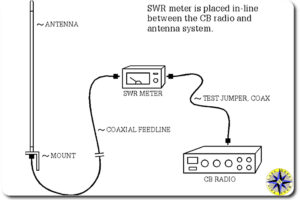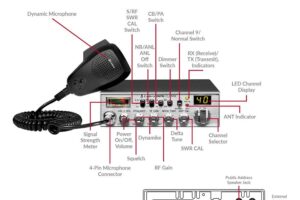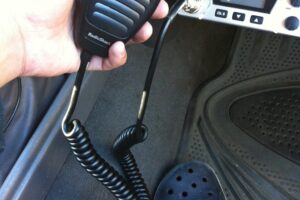How to Tune a CB Radio With Dual Antennas: Step-by-Step Guide
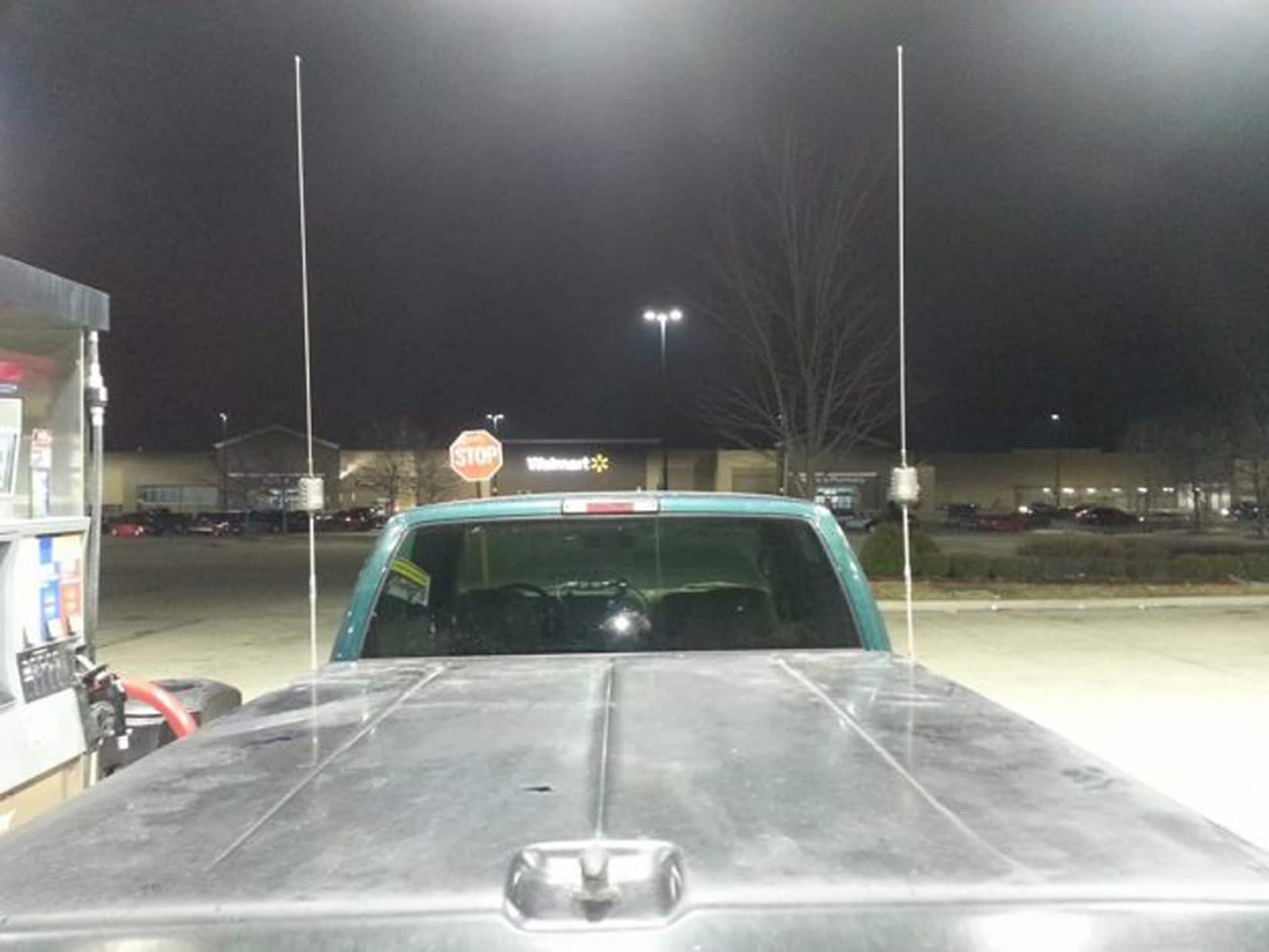
Tuning a CB radio with dual antennas can seem tricky. But it doesn’t have to be.
With the right steps, you can do it easily. CB radios are popular for communication on the road. Dual antennas can improve range and signal strength. Tuning these antennas correctly is key for the best performance. This guide will help you understand the process.
You’ll learn how to adjust your CB radio for clear and strong communication. Let’s get started on making your CB radio work its best.
Introduction To Cb Radio Tuning
Getting your CB radio to work perfectly can be a bit of a challenge, especially if you’re using dual antennas. Tuning your CB radio is a crucial step to ensure clear communication and prevent any damage to your equipment. This guide will walk you through the basics of tuning your CB radio with dual antennas, focusing on the importance of proper tuning and the benefits of using dual antennas.
Importance Of Proper Tuning
Proper tuning of your CB radio is essential for a few reasons. First, it ensures that your radio operates at its maximum potential, giving you clear and strong signals. This is especially important if you rely on your CB radio for critical communication while on the road.
Second, incorrect tuning can lead to interference with other electronics in your vehicle or those nearby. This can be annoying and sometimes even dangerous. Proper tuning minimizes this risk, allowing you to communicate without causing issues for others.
Lastly, not tuning your CB radio correctly can damage the radio itself. This can lead to costly repairs or even the need to replace your equipment. By ensuring your CB radio is properly tuned, you extend its lifespan and maintain its performance.
Benefits Of Dual Antennas
Using dual antennas for your CB radio can significantly improve your communication experience. Dual antennas, also known as co-phased antennas, can increase the range of your signal. This means you can reach other CB users who are farther away, which is particularly useful when traveling in remote areas.
Another advantage is signal clarity. Dual antennas can help reduce dead spots and improve the overall clarity of your transmissions. This is because they can better handle obstructions like buildings or natural terrain, providing a more consistent signal.
Dual antennas also offer better performance in different weather conditions. Whether you’re driving through rain, snow, or fog, dual antennas can help maintain a stable signal. This reliability can be crucial, especially in emergency situations.
Have you ever wondered if dual antennas are worth the investment? If you frequently use your CB radio and want the best performance, the answer is likely yes. The improved range, clarity, and reliability make dual antennas a smart choice for serious CB radio users.
Gathering Necessary Equipment
Before you start tuning your CB radio with dual antennas, gathering the necessary equipment is crucial. Having the right tools ensures a smooth process and optimal performance of your radio system. Let’s dive into what you need and how to stay safe while setting up.
Required Tools
To tune your CB radio with dual antennas, you’ll need a few essential tools. First, get an SWR meter. This device measures the standing wave ratio and helps you adjust your antennas for best performance.
Next, you’ll need a coaxial cable. This cable connects your SWR meter to your CB radio and antennas. Make sure it’s long enough to comfortably reach all components.
Lastly, have some basic hand tools like screwdrivers and wrenches. These will help you make adjustments and secure connections. A notepad and pen can also be handy for jotting down readings and adjustments.
Safety Precautions
Safety should always be your top priority. Start by ensuring your vehicle is parked on a flat, stable surface. This prevents any accidental movement while you’re working.
Disconnect the power to your CB radio before making any adjustments. This prevents electric shock and protects your equipment from damage.
Wear gloves and safety glasses to protect yourself from sharp edges and debris. It’s also wise to keep a first aid kit nearby, just in case of minor injuries.
Gathering the necessary equipment and following these safety precautions sets you up for a successful tuning process. What other tools or tips have you found helpful in your experience? Share your thoughts below!
Preparing Your Cb Radio
Before tuning a CB radio with dual antennas, preparation is key. Proper setup ensures optimal performance and clear communication. Follow these steps to get your CB radio ready.
Setting Up The Radio
First, find a stable spot for your CB radio. It should be easy to access. Ensure it’s near a power source and has enough ventilation. This prevents overheating during use.
Next, connect the power cable to your CB radio. Then, plug it into your vehicle’s power socket. Check that the power connection is secure. Turn on the radio to see if it powers up correctly.
Adjust the squelch and volume knobs. Set the squelch to minimize background noise. This allows you to hear clear signals. Keep the volume at a comfortable level. Test the microphone to ensure it transmits your voice clearly.
Connecting Dual Antennas
Dual antennas, also known as co-phased antennas, need proper spacing. Place them at least 8 feet apart on your vehicle. This distance helps in achieving the best signal reception.
Use quality coaxial cables for connection. Run the cables from each antenna to the CB radio. Avoid sharp bends or kinks in the cables. This prevents signal loss and damage.
Connect each coaxial cable to the antenna connectors on the back of the CB radio. Tighten the connectors by hand. Ensure a snug fit but do not over-tighten.
After connecting, check the SWR (Standing Wave Ratio). This measures the efficiency of your antennas. Use an SWR meter for this test. Adjust the antenna length if needed to lower the SWR reading. An SWR reading below 2.0 is ideal.

Credit: www.rightchannelradios.com
Understanding Swr Meter
When tuning a CB radio with dual antennas, understanding an SWR meter is crucial. SWR stands for Standing Wave Ratio. This meter measures the efficiency of your antenna system. It helps to ensure that your CB radio is transmitting signals properly. A well-tuned antenna will enhance communication and reduce signal loss.
What Is An Swr Meter?
An SWR meter is a device used to check the performance of your antenna system. It measures the ratio of the transmitted signal to the reflected signal. Low SWR readings indicate good performance. High readings suggest there might be issues with the antenna setup. This tool is vital for anyone using a CB radio.
Choosing The Right Swr Meter
Picking the right SWR meter involves considering several factors. First, make sure the meter is compatible with your CB radio. Some meters are designed for specific models. Second, check the frequency range of the meter. It should match the frequency range of your CB radio. Third, look for ease of use. A simple, user-friendly meter will make tuning easier.
Consider the build quality of the SWR meter. Durable materials ensure longevity and reliability. Read reviews and ask for recommendations. Other users’ experiences can guide you in making the right choice. Remember, a good SWR meter will make tuning your dual antennas more effective.
Initial Calibration Steps
Start by setting the SWR meter to calibrate each antenna. Adjust the knobs to get an accurate reading. Ensure both antennas are balanced for optimal performance.
Setting up a CB radio with dual antennas can seem daunting, but it’s simpler than you might think. Properly tuning your radio ensures clear communication and maximizes performance. Let’s dive into the initial calibration steps to get your system running smoothly.
Setting Up Swr Meter
Before you start, you need an SWR (Standing Wave Ratio) meter. This device helps measure the efficiency of your antenna system.
First, connect the SWR meter to your CB radio. Use a short coaxial cable to link the meter’s “transmitter” port to your radio’s antenna jack.
Next, connect your antenna to the meter’s “antenna” port. This setup allows the meter to measure the signal strength.
Taking Initial Readings
With your SWR meter connected, it’s time to take some readings. Begin by turning on your CB radio.
Set your radio to channel 1. Press and hold the transmit button. Check the SWR meter reading.
Record the reading. Now, switch to channel 40, and repeat the process.
Compare the readings from both channels. Ideally, both should be below 2.0. If not, adjustments are needed.
Using these initial steps ensures your CB radio is set up correctly. Have you faced any unique challenges while setting up your system? Share your experiences to help others on their journey!
Credit: www.rightchannelradios.com
Adjusting The Antennas
Adjusting the antennas on a CB radio with dual antennas can be a bit tricky, but it’s essential for achieving the best performance. Proper adjustment ensures clear communication and optimal signal strength. Let’s dive into how you can get your dual antennas perfectly tuned.
Balancing Antenna Lengths
First things first, the lengths of your dual antennas need to be balanced. If one antenna is longer or shorter than the other, it can create an imbalance that affects your signal.
Use a measuring tape to check the length of each antenna. They should be the same height. If not, adjust them accordingly. This simple step can make a huge difference.
Remember that even a small difference can impact performance. Pay attention to the details. Have you ever noticed a drop in signal quality? This could be the culprit.
Fine-tuning For Optimal Performance
Once you’ve balanced the lengths, it’s time to fine-tune the antennas for optimal performance. This involves adjusting the SWR (Standing Wave Ratio), which measures how effectively your antenna is transmitting the radio signal.
To do this, you’ll need an SWR meter. Connect it between the radio and the antenna. Then, key the microphone and take note of the SWR reading. Ideally, it should be as close to 1:1 as possible.
If the reading is too high, adjust the antenna lengths slightly and recheck. It’s a process of trial and error, but patience pays off. A lower SWR means better performance and clearer communication.
Ask yourself: Are you experiencing intermittent signals or poor communication quality? Fine-tuning could be the solution. Take your time, make small adjustments, and watch the improvements unfold.
By focusing on these steps, you’ll ensure that your dual antennas are perfectly tuned for the best CB radio experience.
Final Testing And Adjustments
Final testing and adjustments are crucial for optimal CB radio performance. After setting up dual antennas, fine-tuning ensures clear communication. This involves checking and tweaking various settings. Let’s dive into the steps to perfect your setup.
Rechecking Swr Readings
First, recheck the SWR (Standing Wave Ratio) readings. Turn on your CB radio and switch to the lowest channel. Note the SWR reading on this channel. Then, switch to the highest channel and note the SWR reading again. The ideal SWR reading should be below 2.0. If readings are above 2.0, further adjustments are needed. Ensure both antennas are properly aligned and securely mounted. This helps achieve balanced SWR readings.
Troubleshooting Common Issues
Several common issues may arise during final testing. Poor grounding is a frequent problem. Ensure the antennas are well-grounded to the vehicle’s chassis. Check for loose connections or damaged cables. Replace any faulty components immediately. Another issue could be interference from nearby objects. Ensure no metal objects are obstructing the antennas. Lastly, verify that both antennas are of the same type and length. Mismatched antennas can cause imbalanced readings.
Maintenance Tips
Tuning a CB radio with dual antennas can be a game-changer for communication. However, without proper maintenance, you might not get the best performance. Let’s dive into some essential maintenance tips to keep your dual antennas in top shape.
Regular Check-ups
It’s crucial to perform regular check-ups on your CB radio system. Make it a habit to inspect your antennas at least once a month. Look for any signs of wear and tear or corrosion.
Ensure the connections are tight and clean. Loose connections can degrade signal quality. Also, check the coaxial cable for any damage or kinks that might affect performance.
If you’re unsure about what to look for, consider keeping a checklist. This can help you remember each step and ensure nothing is overlooked. Consistent check-ups can save you from bigger issues down the line.
Prolonging Antenna Life
Prolonging the life of your antennas involves more than just regular check-ups. Protecting your antennas from the elements is key. If possible, park your vehicle in a garage or use an antenna cover.
Cleaning your antennas is another important step. Use a soft cloth and mild detergent to wipe them down. Avoid using harsh chemicals that can damage the antenna’s surface.
Consider using a high-quality antenna mount. A sturdy mount reduces vibrations and movement, protecting the antenna from physical damage. This simple step can significantly extend the life of your antennas.
Remember, a well-maintained antenna not only lasts longer but also performs better. This ensures clear and reliable communication, which is the ultimate goal.
What maintenance tips have worked best for you? Share your experiences in the comments below!
Frequently Asked Questions
How To Calibrate Dual Cb Antennas?
To calibrate dual CB antennas, ensure both are properly mounted. Use an SWR meter to measure and adjust each antenna’s SWR individually. Balance the system by tweaking the length of the antennas until you achieve optimal performance.
Why Run Two Cb Antennas?
Running two CB antennas improves signal range and clarity. It reduces signal dropouts and increases communication reliability.
Can You Use Two Radio Antennas At The Same Time?
Yes, you can use two radio antennas simultaneously with a combiner or antenna switch. This boosts signal strength and reception.
What Channel Do You Calibrate Cb Radio On?
Calibrate your CB radio on channel 20 for optimal performance. This channel is central to the CB band and commonly used.
Conclusion
Tuning a CB radio with dual antennas can enhance your communication. Follow each step carefully to ensure optimal performance. Adjusting antennas properly is crucial for effective transmission. Regular checks maintain efficiency and prevent signal issues. Practice tuning regularly to become proficient.
Clear communication depends on well-tuned equipment. Always prioritize safety during adjustments. Proper tuning enhances radio lifespan and reliability. Enjoy seamless conversations with perfect tuning. Keep your radio in top condition for best results. Explore the benefits of dual antennas for better reach.
Stay connected with ease and clarity. Happy tuning and clear waves!
